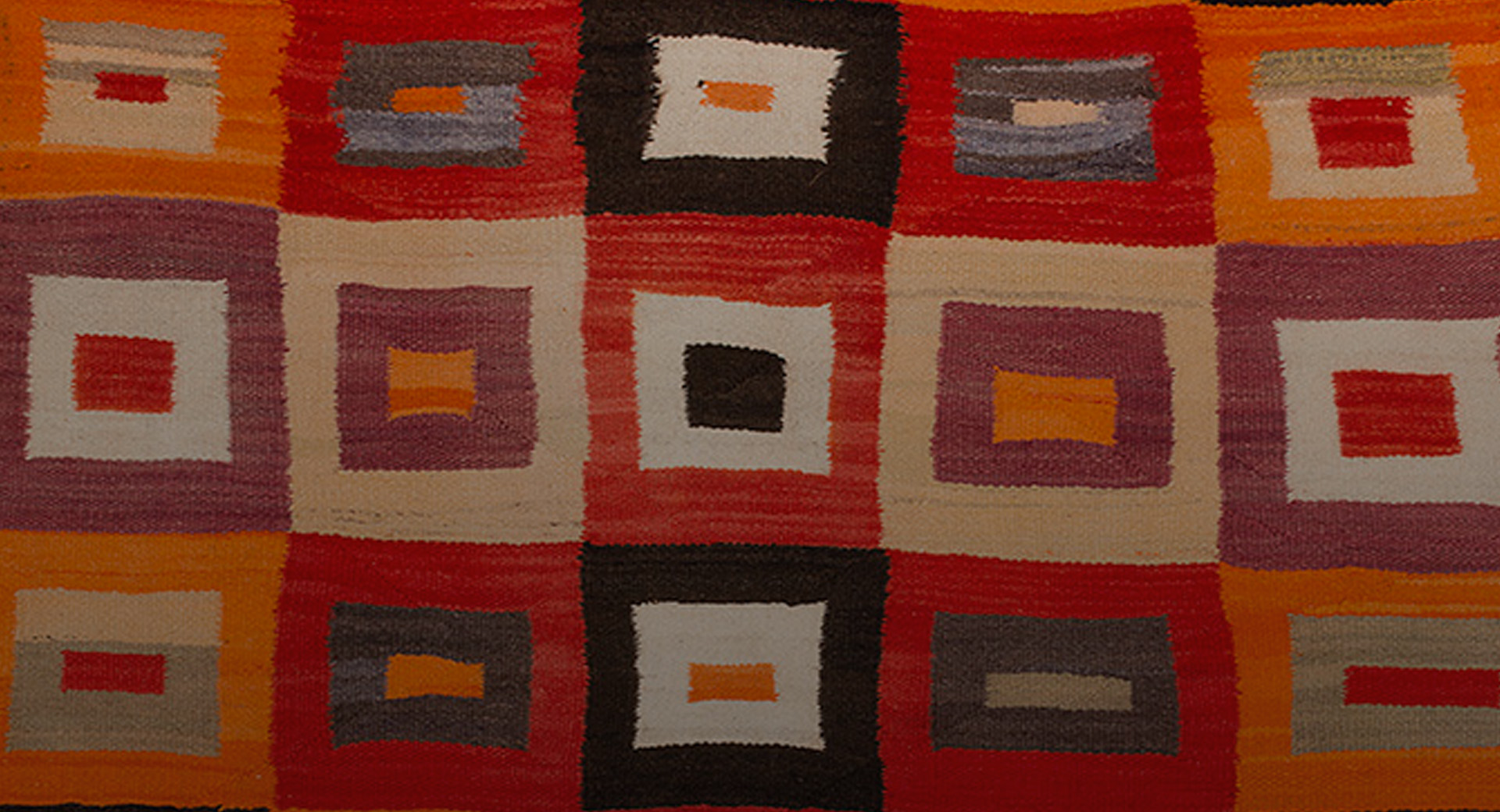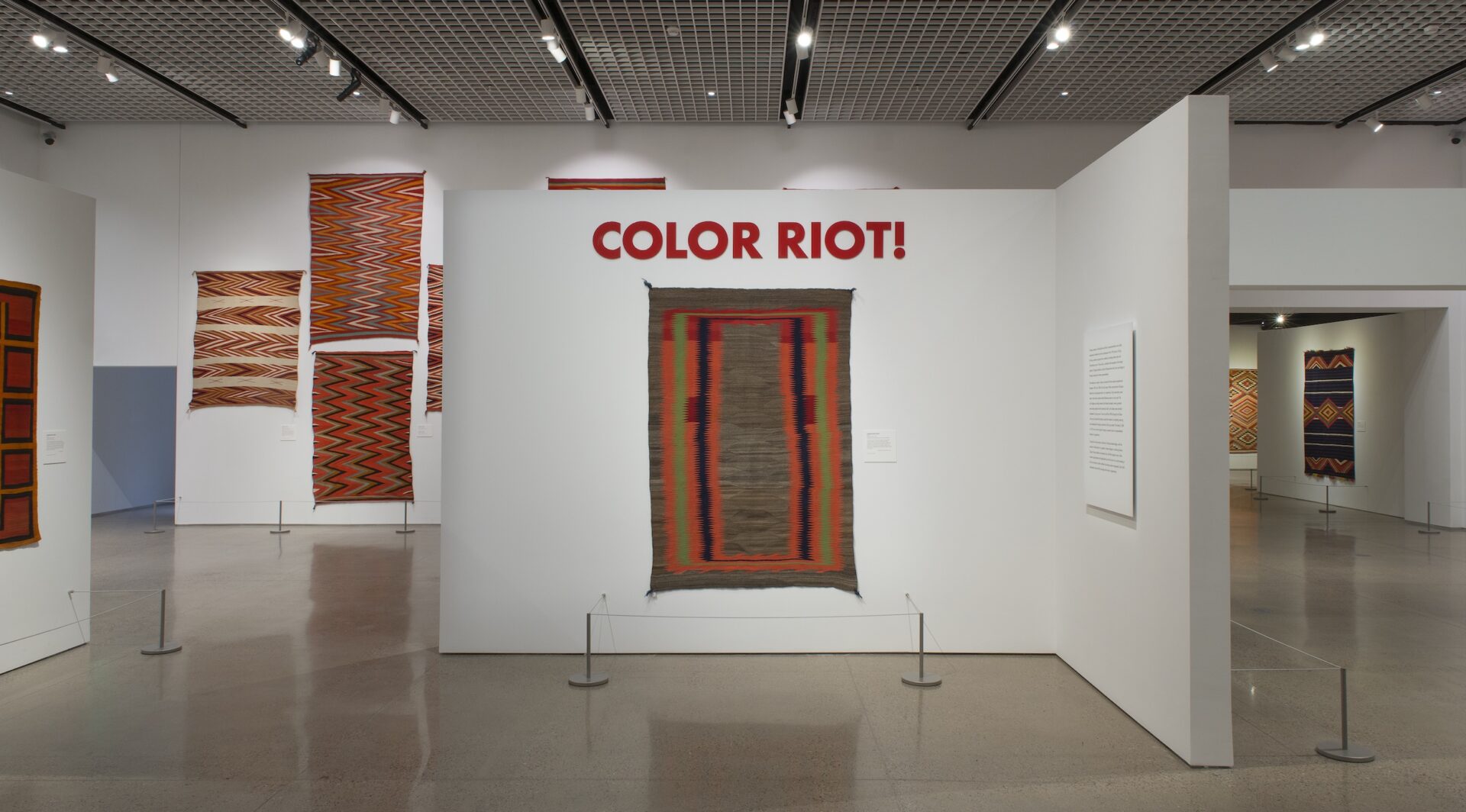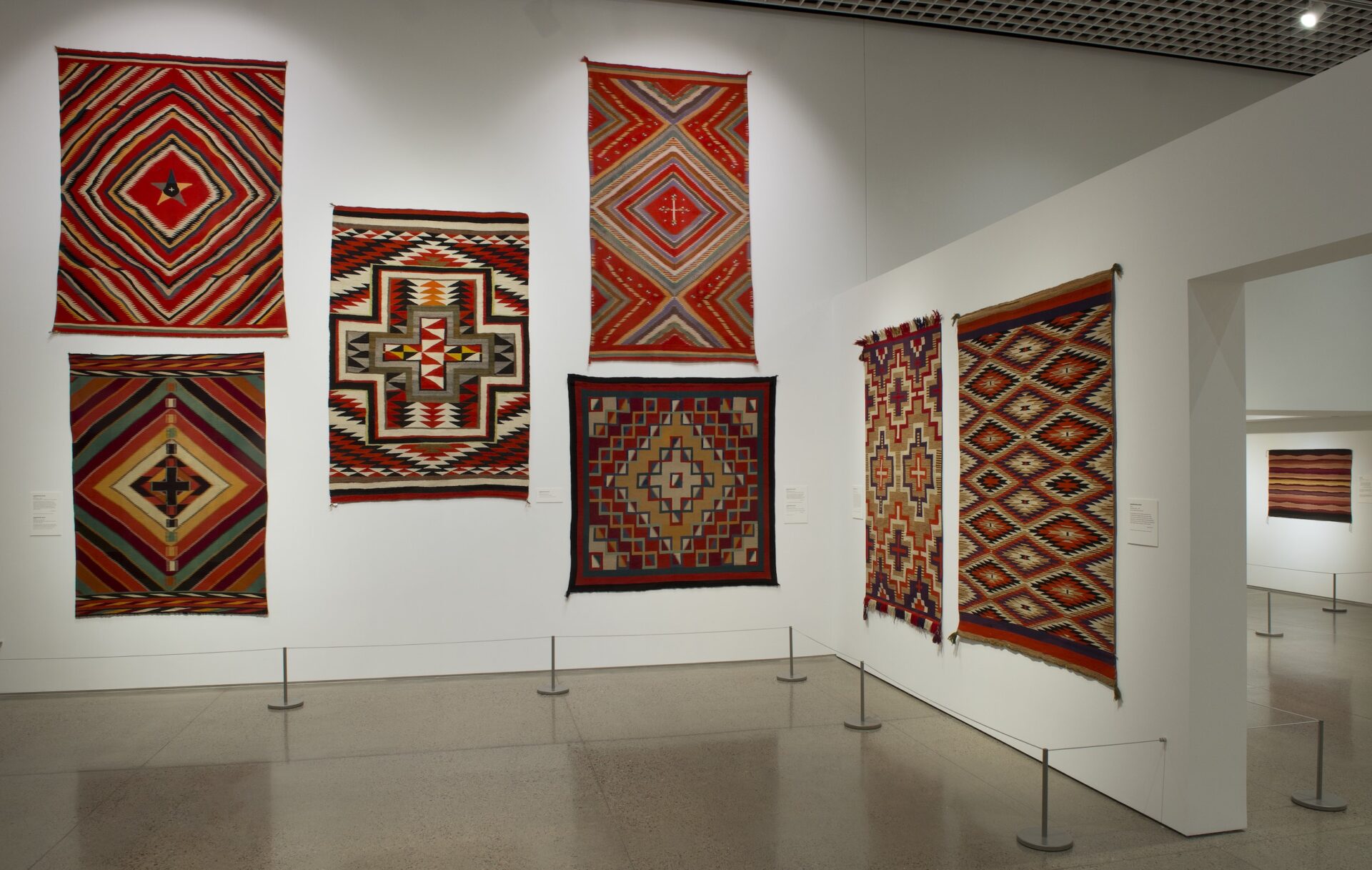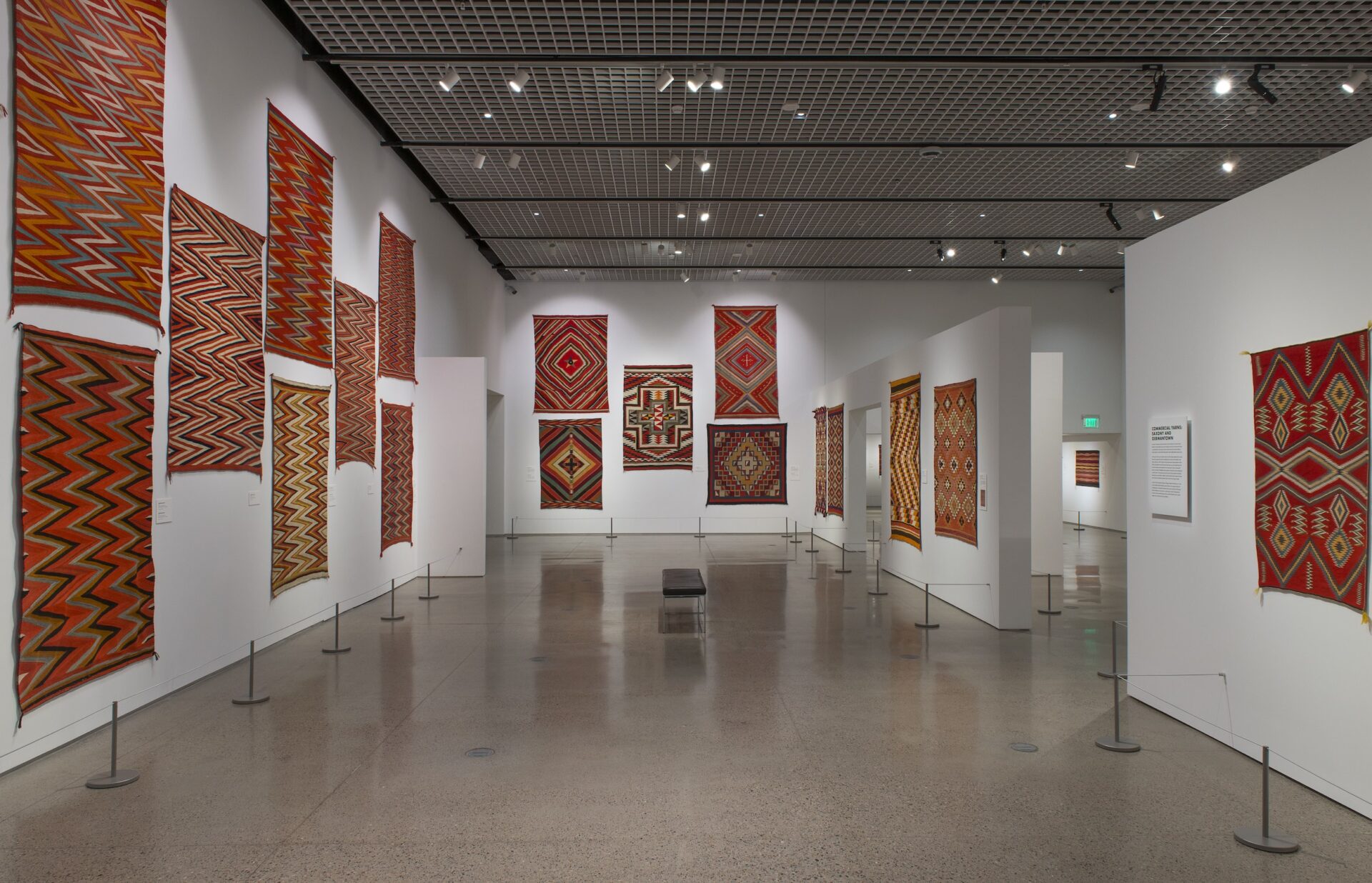Navajo weavers’ individualism and flair for experimentation is vividly expressed in textiles from the last quarter of the 19th century. The textiles are rooted in ideas and events the weavers experienced between 1863 and 1868, the hard years of their imprisonment in the Bosque Redondo, and their subsequent return to a reservation. During this time, weavers saw examples of the design system of Hispanic textiles and acquired new materials such as aniline dyes and Germantown yarns that touched off their experiments with color and design. Commercial products at trading posts sparked additional design ideas for weavers. This was a time when outside market influences were at a low point. The old indigenous trading networks had been disrupted, woven garments were being replaced with commercial cloth and traders had not yet developed design constraints of the rug market that developed in the early 1900s. During this time of great change, as the Navajo rebuilt their flocks and repaired the devastation of Bosque Redondo, weavers had an unprecedented freedom to experiment.
Change has always been a hallmark of Navajo textile design, with the weavers’ individualism to a greater or lesser degree a continuing theme. Today, Navajo textiles are viewed as art with the singular vision of the weaver appreciated and applauded just as the vision of an artist working in the Euro-American artistic tradition has always been recognized.
Gallery Views
Our sponsors
The exhibition is generously supported by





